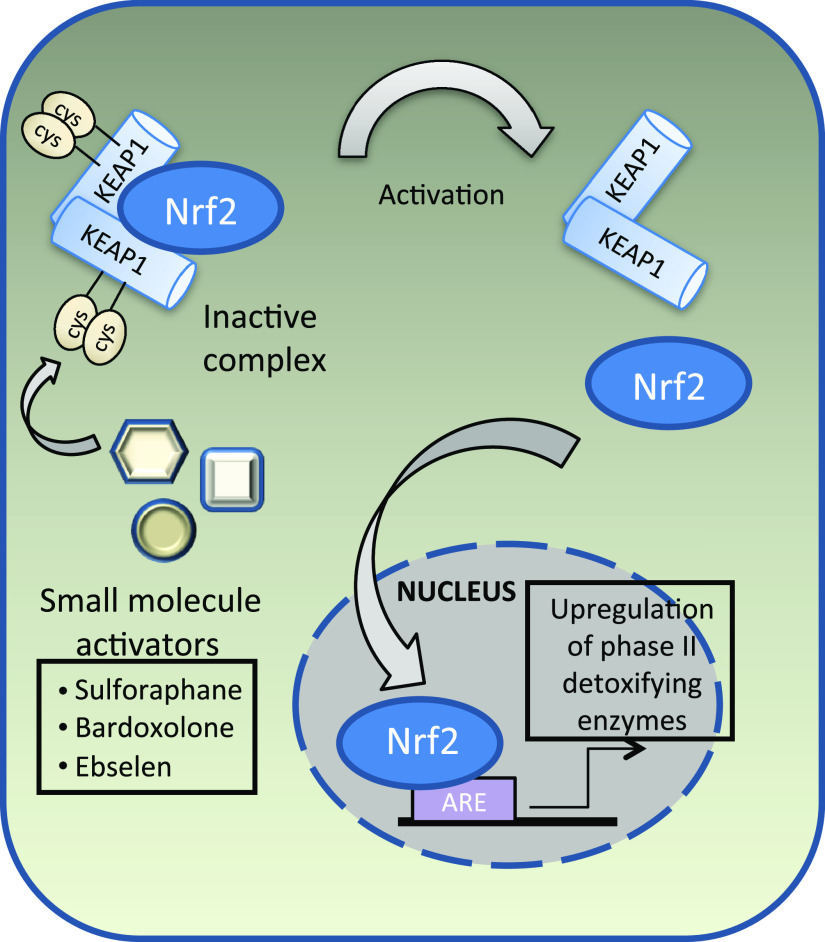FIG. 1.
Upregulation of phase II detoxifying enzymes by small molecule activators involves activation of the Nrf2-Keap1 pathway. The transcription factor Nrf2 is held in an inactive state in the cytoplasm through its interaction with two molecules of its inhibitory partner, Keap1. Small molecule activators such as ebselen, sulforaphane, and bardoxolone interact with cysteine residues within Keap1 causing its dissociation from Nrf2. Specificity of a class of activator is thought to reside in the cysteine (cys) residue it interacts with. Unbound Nrf2 then translocates into the nucleus where it interacts with antioxidant response elements (AREs) of more than 300 genes. Upregulation of these phase II detoxification enzymes protects the cell against oxidative stress. Identification of clinically relevant small molecule activators of Nrf2 is offering promise as a new avenue for treatment against diseases such as diabetic nephropathy. (Adapted from Jung and Kwak [17].)

